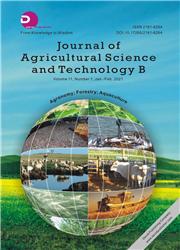Tomatoes Maturation Analysis with Reflectance Spectral Images
引用次数: 3
Abstract
The demands for high quality products are increasing in the market, so several tests are performed. These analyses are destructive, time consuming and sometimes expensive. The spectral imaging technique is an alternative that can reduce costs and time and increase the efficiency and cost-effectiveness of these analyses. In this context, the aim of this study was to verify the spectral behavior of the tomato in function of the maturation and its potential use for non-destructive evaluation of food quality. Eighty tomatoes of the Italian group were selected in four stages of maturation (green, pink, light red and red). Images were collected in wavelengths 480 nm to 710 nm (every 10 nm). After the images were collected, the fruits were submitted to the physical-chemical analyses. The following parameters were analyzed: color, color index (CI), pH, soluble solids (SS), total titratable acidity (TTA) and ratio (SS/TTA). After characterization the mean spectrum was obtained by the extraction of the spectral characteristics. It was observed that the spectral behavior was the same for all stages of maturation. It was possible to differentiate the green tomatoes in the wavelengths from 520 nm to 560 nm and from 610 nm to 660 nm. These intervals represent the area of reflection of chlorophyll and lycopene, respectively. Near the wavelength 560 nm, the highest absorbance was recorded by ripe tomatoes due to the concentration of lycopene. It is concluded that the best wavelengths for analysis are those in which green has the highest reflectance and it is possible to apply this technique for non-destructive analysis of the maturation of tomatoes.番茄成熟度的反射光谱图像分析
市场上对高质量产品的需求越来越高,因此进行了几项测试。这些分析具有破坏性,耗时且有时成本高昂。光谱成像技术是一种替代方案,可以减少成本和时间,并提高这些分析的效率和成本效益。在这种情况下,本研究的目的是验证番茄在成熟功能中的光谱行为及其在食品质量无损评估中的潜在用途。意大利组的80个番茄分为四个成熟阶段(绿色、粉红色、浅红色和红色)。以480nm至710nm的波长(每10nm)收集图像。收集图像后,将水果进行物理化学分析。分析了以下参数:颜色、颜色指数(CI)、pH、可溶性固形物(SS)、总可滴定酸度(TTA)和比率(SS/TTA)。在表征之后,通过提取光谱特征来获得平均光谱。观察到,对于成熟的所有阶段,光谱行为都是相同的。可以在520纳米至560纳米和610纳米至660纳米的波长下区分绿番茄。这些间隔分别代表叶绿素和番茄红素的反射面积。在波长560nm附近,由于番茄红素的浓度,成熟番茄的吸光度最高。得出的结论是,用于分析的最佳波长是绿色具有最高反射率的波长,并且可以将该技术应用于番茄成熟的无损分析。
本文章由计算机程序翻译,如有差异,请以英文原文为准。
求助全文
约1分钟内获得全文
求助全文

 求助内容:
求助内容: 应助结果提醒方式:
应助结果提醒方式:


